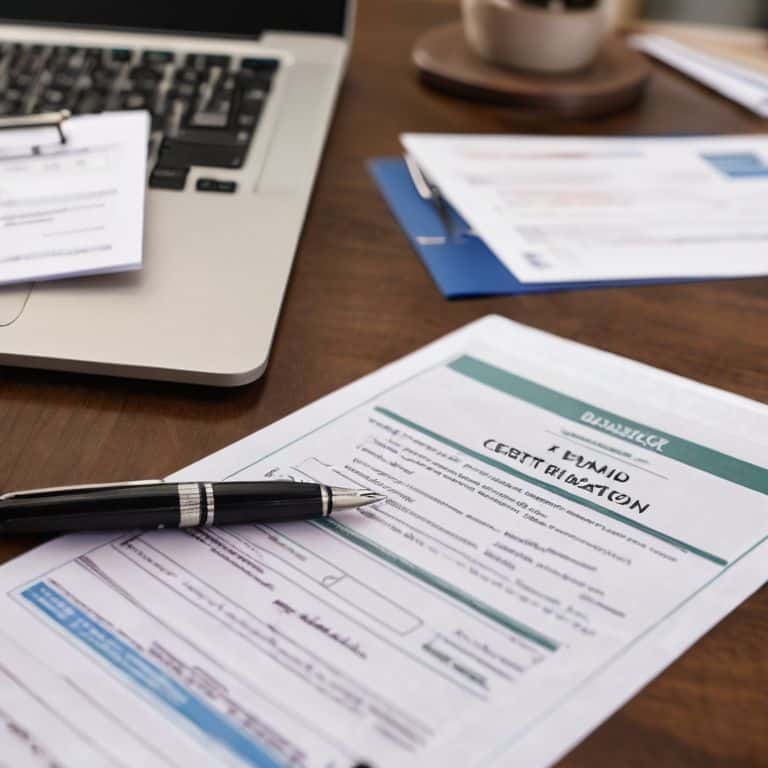I still remember the day I decided to turn my niche blog into a full-time business – it was the moment I realized I needed to set up a business bank account. I was making decent money, but my finances were a mess, and I knew I had to separate my personal and business expenses. The myth that setting up a business bank account is a complicated, tedious process held me back for too long. But trust me, it’s a total game-changer for keeping your finances in check. By setting up a business bank account, you’ll be able to track your income and expenses, make smart financial decisions, and ultimately, build a profitable business.
In this article, I’ll walk you through the exact steps I took to set up a business bank account and how it transformed my blogging business. You’ll learn how to choose the right bank, navigate the application process, and start managing your finances like a pro. I’ll share my personal story, including the mistakes I made and the lessons I learned, to help you avoid common pitfalls and make the most of this crucial step. By the end of this guide, you’ll have a clear understanding of how to set up a business bank account and start building a strong financial foundation for your business.
Table of Contents
Guide Overview: What You'll Need

Total Time: 1 hour 30 minutes
Estimated Cost: $0 – $50
Difficulty Level: Easy
Tools Required
- Computer (with internet connection)
- Phone (for verification)
- Scanner (or mobile scanner app)
Supplies & Materials
- Business License
- Identification (government-issued)
- Proof of Address (e.g., utility bill)
Step-by-Step Instructions
- 1. First, research and compare different business bank account options to find the one that best suits your blogging business needs. Consider factors such as fees, interest rates, and online banking capabilities. I always say, knowing your options is key to making an informed decision.
- 2. Next, gather all the necessary documents to open a business bank account, which typically include your business license, tax ID number, and any other identification required by the bank. It’s essential to have these documents organized and readily available to avoid any delays in the process.
- 3. Now, choose the type of business bank account that’s right for you – this could be a checking account, savings account, or a combination of both. Consider your cash flow management needs and how you plan to use the account to manage your blogging income and expenses.
- 4. Once you’ve selected a bank and account type, visit the bank’s website or branch in person to initiate the account opening process. You’ll typically need to fill out an application form and provide the documents you gathered earlier. Be prepared to answer questions about your business, such as its purpose, revenue, and ownership structure.
- 5. After submitting your application, the bank will review it and may request additional information or documentation to verify your business identity. This is a standard process, so don’t be alarmed if it takes a few days to finalize the account setup. Use this time to set up your online banking and mobile banking apps.
- 6. With your business bank account now open, it’s time to set up your account structure, including any sub-accounts or categories you need to track your income and expenses. This will help you stay organized and make it easier to manage your finances as your blogging business grows.
- 7. Finally, take some time to review and understand the terms and conditions of your business bank account, including any fees associated with transactions, overdrafts, or maintenance. This will help you avoid any unexpected charges and ensure you’re getting the most out of your account.
Setting Up Business Bank

When it comes to managing your finances, having a clear understanding of business bank account requirements is crucial. This includes having a registered business name, tax ID number, and other relevant documents. As a blogger-turned-CEO, it’s essential to stay on top of these details to ensure seamless transactions and avoid any potential issues.
One of the most significant advantages of small business banking options is the ability to opening a business bank account online. This not only saves time but also provides ease of access to your account from anywhere. However, it’s vital to consider business checking account fees and how they may impact your overall expenses. By choosing the right account, you can minimize unnecessary charges and maximize your profits.
To make the most of your business bank account, it’s essential to have a solid understanding of business savings account interest rates. By earning interest on your savings, you can generate passive income and grow your wealth over time. Effective business bank account management tips include regularly reviewing your account statements, monitoring your expenses, and making adjustments as needed to optimize your financial performance.
Business Bank Account Requirements
To get your business bank account up and running, you’ll need to gather some essential documents. Typically, this includes your business license, tax ID number, and articles of incorporation. As a blogger-turned-CEO, it’s crucial to have these documents in order, not just for the bank but for your own financial clarity. I learned this the hard way when I first started my niche blog – having everything organized saved me from countless headaches down the line.
The specific requirements might vary depending on your bank and business structure, so it’s a good idea to check with them ahead of time. But trust me, the effort is worth it. A business bank account is the foundation of treating your blog like a legitimate business, and that’s where the real money is made. By separating your personal and business finances, you’ll be able to make smarter decisions and maximize your income-generating assets – including your blog posts.
Small Business Banking Options
As a blogger-turned-CEO, you have several small business banking options to choose from. You can opt for traditional banks, online banks, or even credit unions. Each has its pros and cons, so it’s essential to weigh your options carefully. Traditional banks offer a wide range of services, but may have higher fees. Online banks, on the other hand, often have lower fees and higher interest rates, but may lack personal interaction.
When selecting a small business banking option, consider your specific needs. If you handle a lot of cash transactions, a traditional bank might be a better fit. However, if you’re primarily online, an online bank could provide more convenience and cost savings. I’ve found that online banks work well for my own business, allowing me to easily manage finances and keep costs low.
5 Smart Moves to Supercharge Your Business Bank Account
- Keep your personal and business finances separate to avoid commingling funds and reduce tax headaches
- Choose a business bank account that offers low fees, high-yield interest, and convenient online banking
- Set up multiple accounts for different revenue streams or business ventures to track income and expenses with ease
- Take advantage of business banking tools like invoicing, payment processing, and cash flow management to streamline operations
- Regularly review and reconcile your business bank account statements to catch errors, prevent fraud, and make informed financial decisions
Key Takeaways to Turn Your Blog into a Thriving Business
Setting up a business bank account is a crucial step in separating your personal and business finances, and it’s essential for maintaining accurate financial records and tax returns
Choosing the right small business banking option can significantly impact your bottom line, so it’s vital to research and compares fees, services, and features before making a decision
By following the step-by-step guide and understanding the business bank account requirements, you’ll be well on your way to transforming your blog into a profitable enterprise, and I’m excited to see the income-generating assets you’ll create
A Financial Foundation
Setting up a business bank account is not just a formality, it’s the first brick in building a financial fortress that separates the hobbyists from the entrepreneurs, and I can tell you from experience, it’s a move that will change the game for your blog’s bottom line.
Isabelle Moreau
Turning Your Blog into a Thriving Business

As we’ve covered, setting up a business bank account is a crucial step in turning your blog into a sustainable enterprise. We’ve discussed the business bank account requirements, explored various small business banking options, and walked through the step-by-step process of getting your account up and running. By following these guidelines, you’ll be well on your way to managing your finances like a pro and making informed decisions about your blog’s future. Remember, a business bank account is not just a necessity, but a powerful tool that can help you streamline your finances and stay focused on what matters most – creating valuable content for your audience.
So, what’s next? Now that you have a solid foundation in place, it’s time to think about the big picture. Your blog has the potential to generate significant income, and with the right financial systems in place, you can turn your passion into a lucrative career. Don’t be afraid to dream big and aim high – with careful planning, persistence, and a willingness to learn, you can turn your blog into a thriving business that brings you both financial freedom and personal fulfillment. Keep pushing forward, and never lose sight of your goal: turning your words into wealth.
Frequently Asked Questions
What are the typical fees associated with business bank accounts and how can I minimize them?
Let’s talk turkey – typical fees for business bank accounts include maintenance fees, transaction fees, and overdraft fees. To minimize them, opt for a low-fee account, keep a minimum balance, and monitor your transactions closely. I’ve saved thousands by doing this with my own blogs, and you can too, by being strategic about your business banking.
Can I use my personal bank account for business transactions or is it absolutely necessary to open a separate business account?
While it’s technically possible to use your personal account for business, I strongly advise against it – it’s a recipe for financial chaos and potential tax headaches. Trust me, keeping your personal and business finances separate is a non-negotiable for any serious blogger-turned-CEO.
How long does it typically take to set up a business bank account and what documents do I need to have ready?
Setting up a business bank account typically takes 1-3 days, depending on the bank. Be prepared with your business license, tax ID number, and proof of address to speed up the process. Trust me, having these documents ready will save you headaches and get you one step closer to turning your blog into a profitable business.
